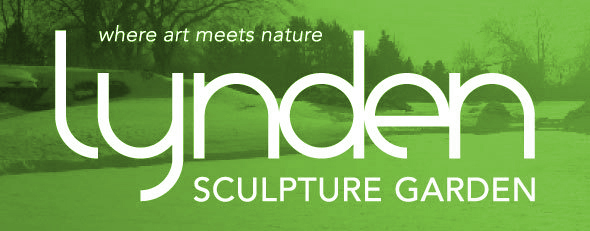Virtual Exhibition Honoring 2020 Nohl Fellows at Haggerty Museum of Art
The Haggerty Museum of Art at Marquette University has opened a virtual exhibition of work by the artists who received the Greater Milwaukee Foundation’s Mary L. Nohl Fund Fellowships for Individual Artists in 2020. The exhibition brings together work by Ck Ledesma and Nirmal Raja in the Established category; and three artists in the Emerging category: Janelle Gramling, Rosy Petri, and Leah Schretenthaler. The exhibition was curated by Emilia Layden, Curator of Collections and Exhibitions at the Haggerty Museum of Art, and remains on view through May 22, 2022.
The Nohl Fellowship exhibition can be accessed here: https://artsandculture.google.
For images and credits: https://www.dropbox.com/sh/
Knowing from the outset that the exhibition would be virtual, artists who already had projects underway were encouraged to adapt to the online exhibition environment by providing progress reports or creating archives. Ck Ledesma had been cooking conbíf, a beloved childhood dish made by their grandmother, to gather people, but with the advent of COVID-19, Proyecto Conbíf snapped into focus. Ledesma offered an antidote to isolation by snail-mailing care packages of ingredients, instructions, and a play list to participants; what had begun as a personal act became a conversation about the effects of enslavement and colonization on the cultural landscapes of the Caribbean and Puerto Rico. Ledesma combed their archive of photographs and videos to create their online exhibition.
In the wake of George Floyd’s murder, Rosy Petri posed a question to her community—a community that had witnessed suffering and death: What is your message to Black women in the future? She completed twenty-five interviews with Black people of marginalized genders (MaGes) and captured them mid-interview in digital portraits. By embedding these materials in a flexible structure of text, images, and video she has made it possible for the project, With Harp and Sword in Hand, to manifest in a variety of forms and places in the future.
Nirmal Raja, an artist who has spent her career examining global movement, the cultural and material legacies of colonialism, and the lingering traces of memory from the perspective of one who has lived in several places, turned to repetitive mark making in sumi ink and homemade gouache on hanji for Recall and Response. This mindful—and often very large-scale–drawing provided a visual equivalent for what it felt like to attempt to process a surfeit of information, like the 24-hour COVID news cycles, without any certainty about what it all meant.
This linking of the artist’s inner and external worlds is visible, too, in Janelle Gramling’s work. Gramling took advantage of the fellowship to experiment with performance for the camera. She collaborated with filmmaker Maeve Jackson to produce a video documenting the artist’s interaction with her latest sculpture, Chrysalis. A reflection on the transformation of her life in the past year, the video also enabled Gramling to explore the latent capacity for movement, change, and response in her shape-shifting works.
Leah Schretenthaler confronted her experiences as a K-12 art educator during a pandemic—the sense of being weighed down by an impossible and ever-growing pile of tasks–by collecting the to-do lists of colleagues far and wide and using them to construct a monument to her fellow teachers. She turned to her traditional methods: photography, laser etching, and metal fabrication to reproduce these piles of lists in mild steel, and then to photograph them in a series of guerilla installations on the grounds of local schools. In the future she plans to find a permanent home for a collection of these sculptures—willing us not to forget.
Kantara Souffrant, in her catalogue essay for Ck Ledesma, references African art historian Babatunde Lawal’s concept of “art for life’s sake,” the profound creativity of art that fosters human hopes and desires. Immersed in what Rosy Petri describes as “the concurrent pandemics of COVID-19 and racism,” the 2020 Nohl Fellows did not look away.
Several additional events for the 2020 Fellows have been planned for the fall. These include two UWM Department of Art & Design Artists Now lectures. Nirmal Raja and the five finalists with whom she shared her award—Portia Cobb, David Niec, Heidi Parkes, Valaria Tatera, and Della Wells—will appear on the series on Wednesday, September 29, 2021, at 7:30 pm. Ck Ledesma will speak on Wednesday, December 1, 2021, also at 7:30 pm. Recordings of these talks will also be archived on the Artists Now! website: https://uwm.edu/arts/art-and-
On September 16, 2021, MIAD will open the ninth iteration of the biennial exhibition honoring a selection of recent recipients of the Greater Milwaukee Foundation’s Mary L. Nohl Fund Suitcase Export Fund. Participants include Peter Barrickman, Debra Brehmer, Kyoung Ae Cho, Santiago Cucullu, Current Projects (Brent Budsberg, Shana McCaw, Alec Regan, and Joseph Thrasher), Makeal Flammini, Skully Gustafson, Molly Hassler, Maeve Jackson, Shelby Keefe, Katie Avila Loughmiller, Kim Miller, Melissa Mursch, Open Kitchen (Alyx Christensen and Rudy Medina), Rosy Petri, Kristina Rolander, Tori Tasch, Ariana Vaeth, Janelle VanderKelen, Michael Ware, and Rina Yoon. One of the goals of the Suitcase Fund is assist Nohl Fellows in sharing their work beyond the borders of greater Milwaukee, and this group includes nine current and former fellows. A reception and subsequent panel discussion are planned. For more information: https://www.miad.edu/
A catalogue highlighting the work of the 2020 Nohl Fellows will be available for purchase at the Haggerty Museum of Art, the Lynden Sculpture Garden, and online: https://www.
Established Artists
Ck LEDESMA: PROYECTO CONBÍF
In Ck Ledesma’s practice, the intersectionality of their identities acts as a departure point to play with the realities of diasporic life while exploring culture, history, place, and ancestry. Proyecto Conbíf was born of the desire to build togetherness from within pandemic isolation, sharing experiences and creating bonds while connecting at a distance. Ledesma had begun working with corned beef prior to the pandemic, cooking it for friends, but when COVID-19 arrived, the project grew roots, connecting to culture and ancestry. It also took on an overtly didactic purpose, becoming part of a conversation about the effects the legacies of enslavement and colonization have on the cultural landscapes of the Caribbean and Puerto Rico. Ledesma began mailing packages of corned beef, instructions for making their favorite childhood meal, and a playlist to friends and acquaintances. The project was swiftly adopted by others: Kantara Souffrant, who wrote an essay about Ledesma’s work for the catalogue, was the first to invite the artist to do the project with a class she was teaching at Illinois State University. As she observes in her essay on Ledesma’s work, “Proyecto Conbíf honors the kitchen as a site where colonized Black and Brown bodies have rendered joy from within violence,” transforming corned beef, a product of the transatlantic slave trade, into a symbol of love, caring, and connection.
Ck Ledesma is a transdisciplinary artist from San Juan, Puerto Rico, living in the diaspora in Milwaukee, Wisconsin. Besides art practices, they are passionate about serving their community while building authentic relationships and the liberation of all BIPOC people. They co-founded Cosecha Creative Space, a community focused “space” that centers connections, understanding, and building togetherness through creative engagement, mutual aid, and the arts: “We connect with our community(ies) to understand our collective/shared humanity and build togetherness—building together through art creation.” Ledesma has served as an artist-in-residence for the Cesar Chavez Drive Business Improvement District in Milwaukee, the Mitchell Street branch of the Milwaukee Public Library, and Casa Candela in Cayey, Puerto Rico. Their work has been exhibited at the Racine Art Museum, through the Museums Association of the Caribbean and, most notably, within the community.
NIRMAL RAJA: RECALL & RESPONSE
In Recall and Response, Raja’s photo archive served as the catalyst for a new drawing series about memory and place, particularly the bits of sensory or somatic information that get lost when we recall the past. As she scrolled through old photos during the spring 2020 quarantine, she experienced a fragmentation of memory that inspired her to abstract pieces of these memory-images, enabling a temporal bridging between the forgotten past and the pandemic moment. These image fragments made their way into large-scale drawings that were rendered through repetitive mark making in sumi ink and homemade gouache on hanji (Korean paper). For Raja, this mindful drawing provided a visual equivalent for what it felt like to attempt to process a surfeit of information (24-hour COVID news cycles) without any certainty about what it all meant. Her process was repetitive, iterative, and guided by a bodily and contemplative awareness that linked Raja’s inner world with the external world. These works record the history of the experience of their making, an experience prompted by a far-off history captured—and subsequently forgotten—by the artist herself.
Nirmal Raja is an interdisciplinary artist who lived in India, South Korea, and Hong Kong before immigrating to the United States thirty years ago. She holds a BA in English Literature from St. Francis College in Hyderabad, India; a BFA from the Milwaukee Institute of Art & Design, and an MFA from the University of Wisconsin- Milwaukee. Raja’s work has been exhibited widely in the Midwest, nationally, and internationally. She often collaborates with other artists and strongly believes in investing energy in her immediate community while also considering the global. She is a mentor for the Milwaukee Artists Resource Network’s mentorship program.
Emerging Artists
JANELLE GRAMLING: CHRYSALIS
“Janelle Gramling,” writes Faythe Levine in her catalogue essay, “is an artist who successfully joins disparate materials to create beautiful objects.” Yet when she entered the studio to work on her Nohl project, she had to acknowledge that “the past twelve months have brought a lot of change in my life,” demanding work that was “more personal and emotional.” She turned to a familiar mix of “craft-centric” materials—porcelain, cotton, linen, steel—and then activated the new sculpture with her body, performing this interaction for the camera, a new medium for Gramling. Hanging on the wall, the sculpture resembles a shield or banner; hooked to the ceiling, it is a cage that imprisons her; piled up beside her on the floor, it is a compact mass that fits within the curve of the artist’s recumbent body. While earlier works have referenced ecology, gender, and personal symbolism, and have “combined ’animal, vegetable, and mineral’ in very simple and deliberate ways to highlight the narratives of each material,” Chrysalis is less about the materials and more of a catalyst—mutable, shape-shifting—in a narrative of transformation. In the video, the flaws created by the hand and the distortion and rearrangement caused by gravity—hallmarks of Gramling’s previous work–amplify the artist’s vulnerability, her human frailty. Gramling’s “devotion to material and process,” Levine concludes, “continues to push her into uncharted territory.”
Janelle Gramling is a Milwaukee native who has been working as a sculptor for over fifteen years. She operates her fine art practice, as well as a business selling her small works as functional pieces and home décor, out of her Milwaukee studio. She lives with her three children and their two pet mice in Bayview.
ROSY PETRI: WITH HARP AND SWORD IN HAND
Rosy Petri is a self-taught artist who fuses printmaking, photography, and multimedia storytelling into her fiber arts practice. Part autobiography, part documentary, her work is about self-discovery, history, and radical Black Joy. In her catalogue essay, Natassha R. Chambliss describes Petri as strong and confident, with the ability to “recognize and portray those same amazing qualities in others and translate this to new audiences through her art.” Petri challenges us to seek out the gifts of those around us. With Harp and Sword in Hand was born of a virtual study group where the participants dreamed of possibilities for a world where Black people might thrive. The murder of George Floyd on May 25, 2020, Petri writes, “was a graphic and sobering reminder of our place in the constellation of now, and a visceral reminder of the plight of our diasporan ancestors.” Over the course of the year, Petri interviewed twenty-five Black MaGes (Black folks of marginalized genders)—community leaders and advocates–about their experiences living through the 2020 concurrent pandemics of COVID-19 and racism. This was a group that had witnessed suffering and death, so for this phase of the project Petri decided to focus on sharing a compilation of responses to the final question of each interview: What is your message to Black women in the future? Petri created twenty-five portraits—many of the subjects caught mid-sentence, hands gesturing, faces animated–to accompany their words. As one committed to “honoring the ancestors (known and forgotten) by carrying on cultural traditions as they have manifested in my life,” Petri embeds these joyful portraits in a structure of text and image panels that include a land and cultural acknowledgment, an invocation from spiritual leader, educator, and community builder Venice Williams, and a fabric portrait of Zora Neale Hurston. As Chambliss concludes, Petri tells the stories that “inspire, motivate, and encourage others to live their lives boldly.”
Rosy Petri is a mother, artist, and storyteller from Milwaukee, Wisconsin. In 2020, Petri received the Mildred Harpole Artist of the Year award from the City of Milwaukee Arts Board. In 2019, as the 11th Pfister Artist in Residence, she created a space to showcase her fabric portraits, record podcast interviews, and celebrate traditions of the African diaspora. The prior year, Petri was a Milwaukee Artist Resource Network mentee under artist Della Wells. Petri’s work can be viewed in several prominent Milwaukee locations, including the Pfister Hotel, where Shavonda’s Bridal High Tea, a legacy piece, commemorates her residency; Northwestern Mutual’s Giving Gallery, where her gestural portrait series Together is featured; and at the Milwaukee County Courthouse, where her MKE WI series is installed outside the county executive’s office.
LEAH SCHRETENTHALER: IN THESE UNPRECEDENTED TIMES
In These Unprecedented Times, writes Darren Ching in his catalogue essay, “offers a glimpse into the changed reality and hardships of being an educator during the COVID-19 pandemic.” Beginning in the spring of 2020, COVID-19 drastically changed K-12 education in this country. Teaching shifted online and teachers were asked to transform their curriculums within a matter of weeks. The new school year brought more tasks for educators. Suddenly, it felt like everyone was teaching for the first time again: whether simultaneously inhabiting virtual and in-person classrooms, or adapting music, art, and the library to travel from room to room while trying to find new places to prep, plan, and grade. Leah Schretenthaler confronted her plight as a K-12 art educator during a pandemic—the sense of being weighed down by an impossible and ever-growing pile of tasks–by collecting the to-do lists of colleagues far and wide and using them to construct a monument to her fellow teachers. (In his catalogue essay, Darren Ching registers of the irony of this: “Amidst the necessary embrace of digital technology…it was an old technology that resonated most with the artist: the familiar tool of the written note, the to-do list.”) She turned to her traditional methods: photography, laser etching, and metal fabrication. Each hastily scribbled to-do list was rusted onto a piece of bent steel, transforming it into an object that materializes the physical weight of the tasks those notes originally carried. The steel was folded and crumpled, much like a to-do list that has been carried around, used, and discarded. For the exhibition, she photographed a series of guerrilla installations. She placed the welded piles of discarded, frequently half-finished, tasks on the grounds of local schools, juxtaposing them with monumental school signs as if to illustrate the unequal power dynamic between educators and the institutions that employ them. Moreover, as Ching observes, “while the artist has brought strength and durability to the subject in her choice of materials, the sculptures reflect a sense of vulnerability—allowed to show evidence of age and distress through rust, patina, and wear from exposure to the elements.” Yet these notes, and the sculptures that have emerged from them, are “a metaphor for a collective struggle—one that was invisible to those outside of their experience.”
Leah Schretenthaler was born and raised in Hawaii, and Hawaii remains a point of reference in her research and studio practice. She was named one of LensCulture’s Emerging Talents of 2018 and placed second in the Sony World Photography Awards the same year. In 2019, she received the Rhonda Wilson Award through FRESH2019 at the Klompching Gallery as well as a Film Photo Award. The following year she was awarded the College Art Association Professional Development Fellowship for Visual Arts. Her work has been displayed nationally and internationally. Schretenthaler holds a BFA, a master’s degree in art education, and an MFA, and currently teaches elementary art education in Wisconsin.
NOTE: This press release was submitted to Urban Milwaukee and was not written by an Urban Milwaukee writer. While it is believed to be reliable, Urban Milwaukee does not guarantee its accuracy or completeness.
Mentioned in This Press Release
Recent Press Releases by Lynden Sculpture Garden
Kites Over Lynden, April 26
Apr 15th, 2025 by Lynden Sculpture GardenLynden Celebrates International Sculpture Day and Earth Week with Kite-flying and Tree-planting ͏ ͏ ͏ ͏ ͏ ͏






















